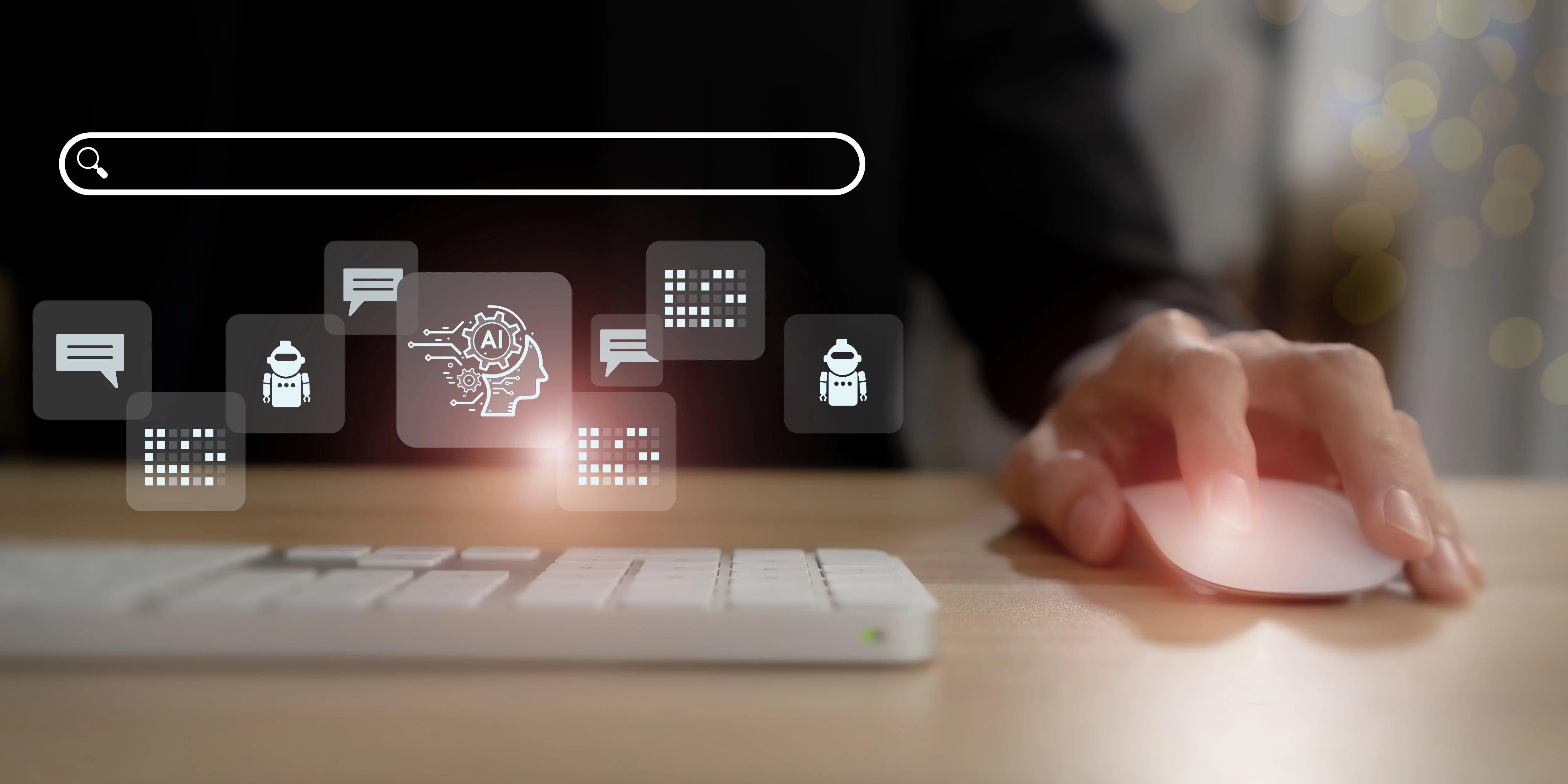Though many people thought this early automation technology would make human assistants obsolete, they did not. Call agents were still in demand to handle more complex tasks like troubleshooting and personalized customer care.
AI doesn’t aim to replace live agents, either, but can enhance their performance. It’s designed to handle routine queries so human agents are free to address complicated issues that require emotional intelligence and nuanced understanding. As part of your organization’s customer service knowledge management strategy, AI-powered tools can expedite first call resolution, reduce average handling times, and more, leading to higher customer satisfaction and loyalty.
A 2023 study conducted by the IBM Institute of Business Value found that three out of four CEOs believe organizations with the most advanced generative AI will have a competitive advantage. ChatGPT customer service is one way businesses can leverage next-level AI technology to stay ahead of the curve.
By implementing ChatGPT into your customer service system, your team can handle a greater volume of customer inquiries in a shorter time, offer personalized solutions, and operate 24/7, giving customers what they want, wherever they are, and on whatever device they choose. At a time when exceptional customer experiences are a key differentiator, generative AI can be the game-changer your business needs.
The Need for AI in Customer Service
Much more than a productivity tool, ChatGPT is becoming a critical driver of customer engagement and competitive differentiation. Its round-the-clock availability ensures customers get the answers they need in real time, regardless of time zones or the constraints of traditional office hours. And the operational efficiencies are not just cost-effective; they also enable human agents to focus on value-added interactions that elevate the customer experience.
Top benefits of AI in customer service include:
- Automation of routine tasks. Reps no longer need to repeatedly answer frequently asked questions. ChatGPT solutions provide instructions for common issues and handle simple customer requests, helping reduce agent workload and decrease the risk of errors.
- Always on. Integrated into your automated customer service assistants, including chatbots, ChatGPT never takes the day off, providing nonstop customer support and reducing the likelihood of customers becoming frustrated or dissatisfied if they can’t get the help they need when they need it.
- Scalability. ChatGPT can handle far more inquiries than a traditional system can in the same amount of time, making it an ideal solution for organizations with large customer bases or interactions. It can easily handle multiple simultaneous conversations, allowing agents to focus on higher priority tasks.
- It helps keep costs down. Maximizing revenue and reducing costs are second only to putting customers first. Generative AI can help lower costs by automating interactions and reducing the need for additional staff.
5 Use Cases of ChatGPT for Customer Service
Using ChatGPT for customer service offers multiple applications, transforming how your business interacts with its customers. Along with sentiment analysis, customer onboarding, and engagement with company offers, these five use cases are proving to be particularly impactful in customer service.
1. Creating Natural Conservations
Though the technology is improving, many people say they know they’re interacting with a bot because the feedback they receive is clunky and impersonal. Creating more human-like conversations using natural language processing (NLP) is improving the customer experience. Instead of short, robotic answers, newer models now engage in interactions that closely resemble human agent back and forth.
Even better, ChatGPT isn’t limited to the English language. It provides multilingual support, expanding your reach and helping you connect with a global audience.
2. Personalized Complaint and Query Responses
Once integrated with a customer relationship management system and trained on customer data, ChatGPT can deliver tailored responses to customer queries and complaints. A personalized response makes a customer feel understood and catered to, contributing to a positive overall experience that drives loyalty and referrals.
3. Customer Review Response
Ninety-five percent of customers read online reviews before buying a product and nearly half say they trust them as much as personal recommendations. But did you know that one negative review requires roughly 40 positive reviews to outweigh its impact?
If a customer posts a positive or negative online review about your organization’s customer service, ChatGPT can be trained to respond appropriately, so reviews never go unanswered. It can thank customers for their contributions or apologize for less-than-stellar service. Just ensure the answers vary so they don’t come off as vague or impersonal.
You can also use ChatGPT to collect actionable feedback, as the software learns customers’ top priorities and decides which actions to take. By putting the customer’s voice front and center, generative AI can collect and analyze feedback and deliver pain points with ease, empowering agents to make better-informed decisions.
4. Answering FAQs
If there’s something ChatGPT already excels at, it’s giving straightforward answers to simple questions. It can also identify repetitive questions, such as “Where’s my order,” “Can I track my package,” and “How do I make a return,” and provide quick, consistent, and accurate responses. In the not-too-distant future, you should be able to use the technology to recommend particular knowledge base articles, so customers can find the information they need on their own.
5. Respond to Customer Emails
ChatGPT makes it easy for service reps to input customer inquiries into the software and use it to draft answers to customer emails. It helps by:
- Automatically sorting and prioritizing incoming emails, categorizing them based on type of query, urgency, or customer value.
- Generating template replies based on predefined forms or previously effective responses.
- Personalizing email responses to individual customers, enhancing engagement and satisfaction.
- Sending follow-up emails to confirm resolution, ask for feedback, or provide additional information.
- Reducing the error rate in email responses.
- Analyzing customer interactions over time to refine future responses and contribute to your organization’s database.
Components of ChatGPT in Customer Service
Generative pre-trained transformers (GPTs) are now commonly available. OpenAI’s version, ChatGPT was launched in 2022 and uses a powerful large language model (LLM) called GPT-4 that can read, summarize, translate, and predict written language.
LLMs have been used in the customer service industry for quite a while, powering customer service automation software. But ChatGPT uses advanced machine learning (ML) capabilities to understand texts and generate human responses so customers can engage in entire conversations that feel like genuine human interactions.
Are there drawbacks to ChatGPT AI in customer service?
As with most technologies, ChatGPT does have limitations or challenges, the most significant being its generic and unpredictable nature. Other handicaps include:
- You can’t control the generated responses. ChatGPT doesn’t follow a predefined script, making it difficult for it to retrieve simple, fact-based information. There’s also a risk the answer is technically correct but is out-of-date; in some cases, the technology has generated information that’s plainly false or created out of thin air.
- It often falls short of providing excellent customer service. Right now, ChatGPT can’t handle nuanced scenarios that other customer support tools already manage with ease. For instance, it can’t set up workflows, offer omnichannel support, or manage product catalogs for agents. Plus, answers are often overly formal or flowery, unable to achieve the level of casualness many customers prefer.
- It’s still inflexible to adapt to distinct needs. Organizations are currently at the mercy of whatever ChatGPT finds on the internet. Until that changes, using more sophisticated existing customer service automation software is the better choice.
Implementing ChatGPT in Customer Service
It seems like everywhere you turn these days, there’s another article about how AI is taking over the world. It’s important to remember, though, that AI technology has been available and used in customer support for years before ChatGPT came on the scene.
Where ChatGPT shines is in paving the way for a broader audience to realize AI’s potential for bringing drastic improvements across customer service and delivering the remarkable experiences customers have long been promised. While we aren’t fully there yet, the LLMs that power ChatGPT can have an impressive impact on customer service.
When implementing a ChatGPT automated assistant for customer service, you must:
- Choose a tech stack that supports NLP and machine learning algorithms. You can also choose a pre-built platform.
- Train the bot using a dataset comprised of common questions, keywords, and phrases related to your customer service goals.
- Integrate the chatbot into existing channels like mobile apps, websites, and social media platforms.
- Conduct consistent testing, including A/B tests that compare the technology’s performance against human agents or other automated solutions.
Post implementation efforts include regular monitoring, creating a feedback loop, and having a procedure to seamlessly escalate issues to human agents when the chatbot can’t solve a problem or the customer requests it.
The Future of ChatGPT AI in Customer Service
As ChatGPT marches steadily forward, it’s poised to become an integral component of an organization’s knowledge management system for customer service. Experts predict it won’t be long before the technology can harness and use vast amounts of data to provide increasingly accurate and personalized solutions to customer queries.
Today, several factors are driving ChatGPT’s relevance in customer service:
- AI-powered chatbots are more cost-effective than hiring and training additional human agents to handle routine tasks.
- The technology makes customer service available 24/7 without the need to outsource or hire more agents.
- AI tools reduce average handling time by gathering customer information before a conversation’s initiated with a service rep.
When our client, Globe Telecom, made a public pledge to become the #1 customer provider in the Philippine’s telecommunications sector, it needed a way to unlock and share the knowledge its thousands of contact center and shop agents held. To achieve this goal, they chose KMS Lighthouse, tapping into its AI-driven capabilities to empower its agents in answering customer queries efficiently and effectively.
After deploying Lighthouse to meet their customer service promise, early results were encouraging, showing impressive improvement in all KPIs and ROI. The company also realized a reduction in service costs and an improvement in customer satisfaction.
When you invest in ChatGPT AI for your organization’s customer service solutions, you can create a more dynamic, responsive, and customer-centric approach that delivers an outstanding customer experience. With the likes of ChatGPT leading the charge, the future of customer services appears bright, indeed.
Are you interested in learning more about how KMS Lighthouse can help you offer the AI-powered customer support that puts you ahead of the crowd? We’ll show you how AI can transform how your organization interacts with its customers, creating exceptional customer experiences that drive loyalty and improve the bottom line.







